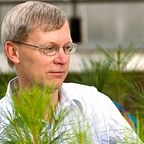Unveiling the Intricacies of the Forest Food Chain: A Comprehensive Guide
Introduction
Exploring the enchanting world of forest ecosystems unveils a delicate dance of survival, with every organism playing a crucial role. In this article, we delve into the intricacies of the forest food chain, shedding light on easy-to-understand forest food chain diagrams, the role of producers in the forest food web, and the unique dynamics of the forest food chain.
Understanding the Basics: What is a Forest Food Chain?
At its core, a forest food chain represents the transfer of energy through different organisms in a forest ecosystem. It illustrates the predator-prey relationships and how energy flows from one organism to another. To comprehend this better, let’s break down the components of a forest food chain.
The Foundation: Producers in the Forest Food Web
Producers — The Green Architects
In any forest ecosystem, the producers take center stage. These are the green architects — the plants. Through the process of photosynthesis, they convert sunlight into energy, laying the foundation for the entire food chain. Trees, shrubs, and grasses are the unsung heroes sustaining life in the forest.
Primary Consumers — Navigating the Herbivore Highway
Moving up the chain, we encounter the primary consumers — the herbivores. From deer gracefully grazing to insects munching on leaves, these organisms form the next level in the forest food chain, relying on the energy captured by the producers.
Secondary Consumers — The Carnivorous Carousel
Enter the carnivores. These are the secondary consumers that thrive on a diet of herbivores. From foxes to owls, the forest becomes a carnivorous carousel where each predator plays a vital role in maintaining the delicate balance of the ecosystem.
Easy Forest Food Chain Diagram: A Visual Journey
Visualizing the Connections
Understanding a forest food chain becomes much simpler with a visual aid. An easy forest food chain diagram visually represents the relationships between different organisms, showcasing the flow of energy. From the lush greenery at the base to the predators at the top, the diagram encapsulates the essence of the forest ecosystem.
Forest Food Web Producers: The Network of Life
Interconnected Relationships
Beyond a linear chain, the forest food web introduces a network of interconnected relationships. Producers, as the backbone of this web, link with various consumers, showcasing the complexity of nature’s design. This intricate web highlights the interdependence of species, emphasizing the importance of each organism in sustaining the ecosystem.
Navigating the Challenges: Food Chain in Grasslands
Contrasting Ecosystems
While forests thrive on their rich biodiversity, grasslands present a different picture. Exploring the food chain in grasslands unveils unique challenges and adaptations. The dynamic interplay between predators and prey in these open landscapes adds another layer to our understanding of ecosystems.
The Circle of Life: Conclusion
In conclusion, the forest food chain is a captivating journey through the circle of life, where every organism plays a pivotal role. From the humble producers harnessing sunlight to the fierce predators maintaining balance, each entity contributes to the harmony of the forest ecosystem. As we marvel at the complexity of nature’s design, let this article serve as a guide, unraveling the secrets of the forest food chain in a way that both educates and inspires.
